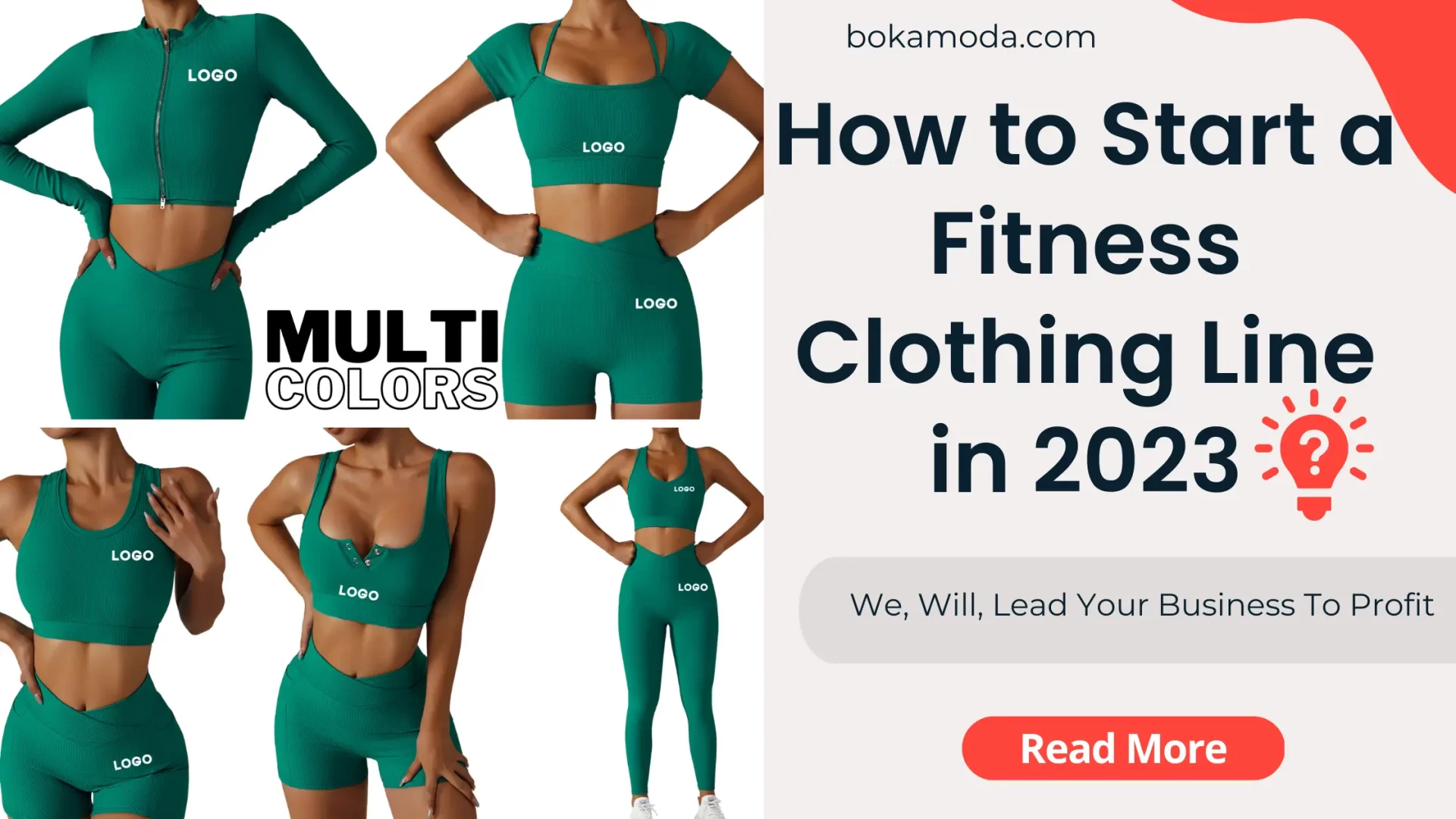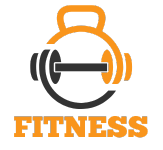Can you start a fitness clothing line without prior experience? Yes, with thorough research and a solid plan. This guide will walk you through every step of launching your own fitness apparel business, from initial concept to a thriving activewear brand launch.

Image Source: bokamoda.com
Developing Your Brand’s Vision and Identity
The first step in creating a successful fitness clothing line is to establish a strong brand vision. What makes your brand unique? Who are you trying to reach? Fathoming your target audience is crucial for shaping your brand’s voice, aesthetic, and product offerings.
Defining Your Niche
The fitness apparel market is vast. Identifying a specific niche will help you stand out and connect with a dedicated customer base.
- Target Audience: Consider demographics (age, gender, location), psychographics (lifestyle, values, interests), and fitness levels (beginners, athletes, specific sports enthusiasts).
- Product Focus: Will you specialize in yoga wear, running gear, high-intensity training outfits, or perhaps a broader range of activewear?
- Brand Story: What message do you want to convey? Is it about empowerment, performance, sustainability, or comfort?
Crafting Your Brand Name and Logo
Your brand name and logo are the visual representation of your identity. They should be memorable, relevant, and appealing to your target audience.
- Name Selection: Choose a name that is easy to say, spell, and remember. Ensure it’s available as a domain name and on social media platforms.
- Logo Design: Invest in professional logo design. Your logo should be versatile enough to be used on clothing labels, your website, and marketing materials.
Establishing Your Brand’s Aesthetic and Tone
Your brand’s aesthetic encompasses your color palette, typography, imagery, and overall visual style. The tone of voice reflects how you communicate with your customers.
- Visual Style: Think about the mood you want to evoke. Is it sleek and modern, bold and energetic, or natural and earthy?
- Tone of Voice: Will you be motivational, educational, friendly, or sophisticated? Consistency in your brand’s tone is key.
Market Research and Business Planning
A robust business plan is the backbone of any successful venture. It outlines your goals, strategies, and financial projections. Thorough market research will inform these decisions.
Analyzing the Competition
Before diving in, study your competitors. What are they doing well? Where are their gaps?
- Identify Key Players: Who are the leading brands in your chosen niche?
- Analyze Product Offerings: Examine their designs, materials, pricing, and quality.
- Assess Marketing Strategies: How do they reach their customers? What channels do they use?
Creating Your Gym Wear Business Plan
Your business plan should cover all essential aspects of your operation.
- Executive Summary: A brief overview of your business.
- Company Description: Your brand’s mission, vision, and values.
- Market Analysis: Your target market, competitive landscape, and industry trends.
- Products and Services: Details about your fitness apparel line.
- Marketing and Sales Strategy: How you will reach and sell to customers.
- Management Team: Information about your team’s expertise.
- Financial Plan: Startup costs, funding sources, revenue projections, and break-even analysis.
Understanding Your Target Customer Persona
Deeply knowing your customer is vital. Create detailed personas to represent your ideal buyers.
| Persona Name | Age | Occupation | Fitness Habits | Pain Points | Motivations |
|---|---|---|---|---|---|
| Active Annie | 28 | Graphic Designer | Yoga, running 3x/week | Wants stylish, durable activewear that’s also eco-friendly. | Feeling confident and comfortable during workouts, supporting sustainable brands. |
| Gym Guru Greg | 35 | Personal Trainer | Weightlifting, HIIT 5x/week | Needs performance-focused apparel that wicks sweat and allows full range of motion. | Maximizing workout performance, looking professional while training clients. |
Designing Your Fitness Apparel
The design of your clothing is paramount. It needs to be functional, stylish, and well-made.
Sketching and Prototyping
Begin with sketches to visualize your ideas. Then, move to creating prototypes.
- Initial Sketches: Draw out your designs, focusing on silhouette, details, and functionality.
- Technical Drawings (Tech Packs): These are detailed blueprints for your garments, including measurements, materials, stitching, and construction. They are essential for manufacturers.
- First Prototypes: Work with a sample maker to bring your designs to life. This is an iterative process.
Selecting Fabrics and Materials
The right fabrics can make or break your activewear. Consider performance, comfort, durability, and aesthetics.
- Performance Fabrics:
- Moisture-Wicking: Polyester, nylon blends, bamboo blends.
- Breathability: Mesh panels, lightweight knits.
- Stretch and Recovery: Spandex (Lycra), elastane.
- Compression: Fabrics with higher spandex content.
- Sustainability: Explore recycled polyester, organic cotton, or Tencel™ Lyocell.
- Durability: Consider fabric weight and weave for longevity.
Color Palettes and Prints
Choose colors and prints that align with your brand’s aesthetic and appeal to your target market.
- Color Psychology: Understand how colors affect mood and perception.
- Trend Analysis: Stay informed about current color trends in fashion and fitness.
- Print Design: Create unique prints or use classic patterns that resonate with your brand.
Sourcing and Manufacturing
Finding the right manufacturing partner is critical for producing high-quality garments. This is a significant part of the fitness apparel business.
Manufacturing Options
You have several avenues for getting your designs produced.
- Domestic Manufacturing: Offers greater control over quality and ethical production, but can be more expensive.
- Overseas Manufacturing: Often more cost-effective, but requires careful vetting of factories for quality and labor practices.
- Private Label Fitness Clothing: This involves purchasing pre-made garments from a manufacturer and adding your own branding. It’s a faster way to get products to market but offers less design control.
Finding a Reliable Manufacturer
Your choice of manufacturer directly impacts your product quality and brand reputation.
- Research and Vetting: Look for manufacturers with experience in activewear production.
- Request Samples: Always ask for samples of their work before committing to a large order.
- Minimum Order Quantities (MOQs): Understand their MOQs and ensure they align with your startup budget.
- Ethical Practices: Verify their commitment to fair labor and environmental standards.
Quality Control
Implementing a rigorous quality control process is essential to ensure customer satisfaction.
- In-Person Inspections: If possible, visit the factory to oversee production.
- Third-Party Inspections: Hire independent inspectors to check finished goods.
- Detailed Checklists: Create a checklist for common defects to look for.
Building Your Online Presence and Marketing Strategy
In today’s digital age, a strong online presence is non-negotiable for any apparel brand strategy.
Developing Your E-commerce Website
Your website is your digital storefront. It needs to be professional, user-friendly, and visually appealing.
- Platform Choice: Shopify, WooCommerce (WordPress), or Squarespace are popular options.
- User Experience (UX): Ensure easy navigation, clear product descriptions, high-quality images, and a seamless checkout process.
- Mobile Responsiveness: Your site must look and function perfectly on all devices.
Social Media Marketing
Social media is a powerful tool for building brand awareness and engaging with your audience.
- Platform Selection: Focus on platforms where your target audience spends their time (Instagram, TikTok, Facebook, Pinterest).
- Content Strategy: Post high-quality images and videos of your products, behind-the-scenes glimpses, fitness tips, and user-generated content.
- Influencer Marketing: Collaborate with fitness influencers whose followers align with your target market.
- Paid Advertising: Utilize social media ads to reach a wider audience.
Content Marketing and SEO
Create valuable content that attracts and informs your audience, while also optimizing for search engines.
- Blog: Share articles on fitness, nutrition, wellness, and fashion.
- SEO Optimization: Use relevant keywords in your website content, product descriptions, and blog posts to improve search engine rankings.
- Email Marketing: Build an email list and send out newsletters with promotions, new product announcements, and exclusive content.
Launching Your Sportswear Line
The launch phase is where your hard work comes to fruition. A well-executed launch can create significant buzz.
Pre-Launch Buzz
Generate excitement before your official launch.
- Teaser Campaigns: Share sneak peeks of your products on social media.
- Email Sign-ups: Offer early access or exclusive discounts for subscribers.
- Collaborations: Partner with complementary brands or influencers for cross-promotion.
Launch Day Activities
Make a splash on launch day.
- Website Go-Live: Ensure your website is fully functional and ready for orders.
- Social Media Blitz: Announce your launch across all your social channels.
- Press Releases: Send out a press release to relevant media outlets and bloggers.
- Launch Promotions: Offer introductory discounts or bundles.
Post-Launch Growth and Scaling
Launching is just the beginning. Sustained growth requires ongoing effort and adaptation.
Customer Service and Feedback
Excellent customer service builds loyalty and positive word-of-mouth.
- Responsive Support: Address customer inquiries and issues promptly.
- Solicit Feedback: Encourage reviews and use feedback to improve your products and services.
- Returns and Exchanges: Have a clear and fair policy.
Expanding Your Product Line
As your brand grows, consider expanding your offerings.
- New Designs: Introduce new styles, colors, and fits based on market trends and customer demand.
- Complementary Products: Think about accessories like sports bras, leggings, shorts, tops, or even outerwear.
- Seasonal Collections: Release limited-edition collections for specific seasons or events.
Scaling Your Operations
As demand increases, you’ll need to scale your business efficiently.
- Inventory Management: Implement systems to track inventory levels.
- Manufacturing Capacity: Work with your manufacturers to increase production volume.
- Logistics and Fulfillment: Streamline your shipping and order fulfillment processes.
Clothing Business Essentials: Beyond the Apparel
Running a successful fitness clothing line involves more than just great designs.
Legal and Administrative Aspects
Don’t overlook the crucial legal and administrative tasks.
- Business Registration: Register your business and obtain necessary licenses and permits.
- Intellectual Property: Protect your brand name and logo with trademarks. Consider design patents for unique garment features.
- Contracts: Have clear contracts with manufacturers, suppliers, and collaborators.
Financial Management
Sound financial management is key to long-term sustainability.
- Bookkeeping: Keep accurate financial records.
- Budgeting: Create and stick to a budget.
- Pricing Strategy: Ensure your pricing covers costs and allows for profit.
- Taxes: Stay compliant with tax regulations.
Building a Team
As your business grows, you may need to hire help.
- Identify Needs: Determine what roles are essential for growth (e.g., marketing specialist, operations manager).
- Hiring Process: Look for individuals who are passionate about fitness and align with your brand values.
Frequently Asked Questions (FAQ)
What are the typical startup costs for a fitness clothing line?
Startup costs can vary significantly, ranging from a few thousand dollars for a small, private label operation to tens or hundreds of thousands for a fully custom-designed line with significant marketing investment. Key costs include design and prototyping, fabric sourcing, manufacturing (MOQs), website development, marketing, and initial inventory.
How long does it take to launch a fitness clothing line?
The timeline can range from 6 months to over a year. This depends on the complexity of your designs, sourcing and manufacturing lead times, and how quickly you can build your brand presence and online store.
What is the difference between activewear and athleisure?
Activewear is specifically designed for athletic performance, emphasizing functionality, moisture-wicking, and support. Athleisure, while often made from similar technical fabrics, is designed for both performance and casual wear, blurring the lines between exercise clothing and everyday fashion.
How important is sustainability in the fitness apparel business?
Sustainability is increasingly important to consumers. Many are looking for brands that use eco-friendly materials, ethical manufacturing practices, and minimize their environmental impact. Incorporating sustainable elements can be a significant competitive advantage.
Can I start a fitness clothing line with no experience in fashion?
Yes, you can. While fashion experience is beneficial, it’s not an absolute requirement. Dedication to research, a willingness to learn, and the ability to collaborate with experienced designers and manufacturers can lead to success. Many successful entrepreneurs in this space have come from diverse backgrounds.
Starting a fitness clothing line is a challenging yet rewarding journey. By carefully planning, focusing on quality, and connecting authentically with your audience, you can build a thriving activewear brand that resonates with fitness enthusiasts worldwide.
